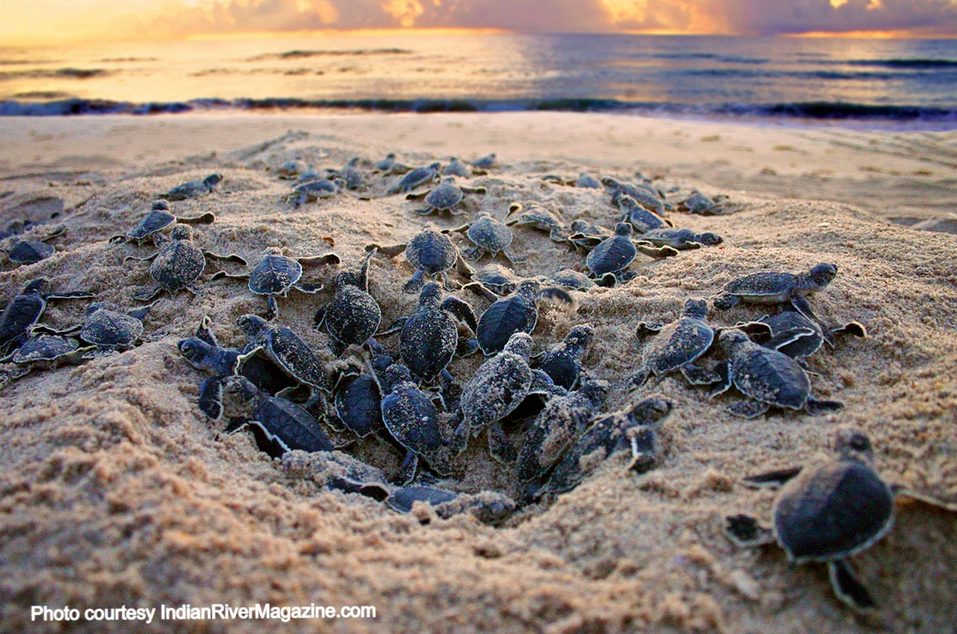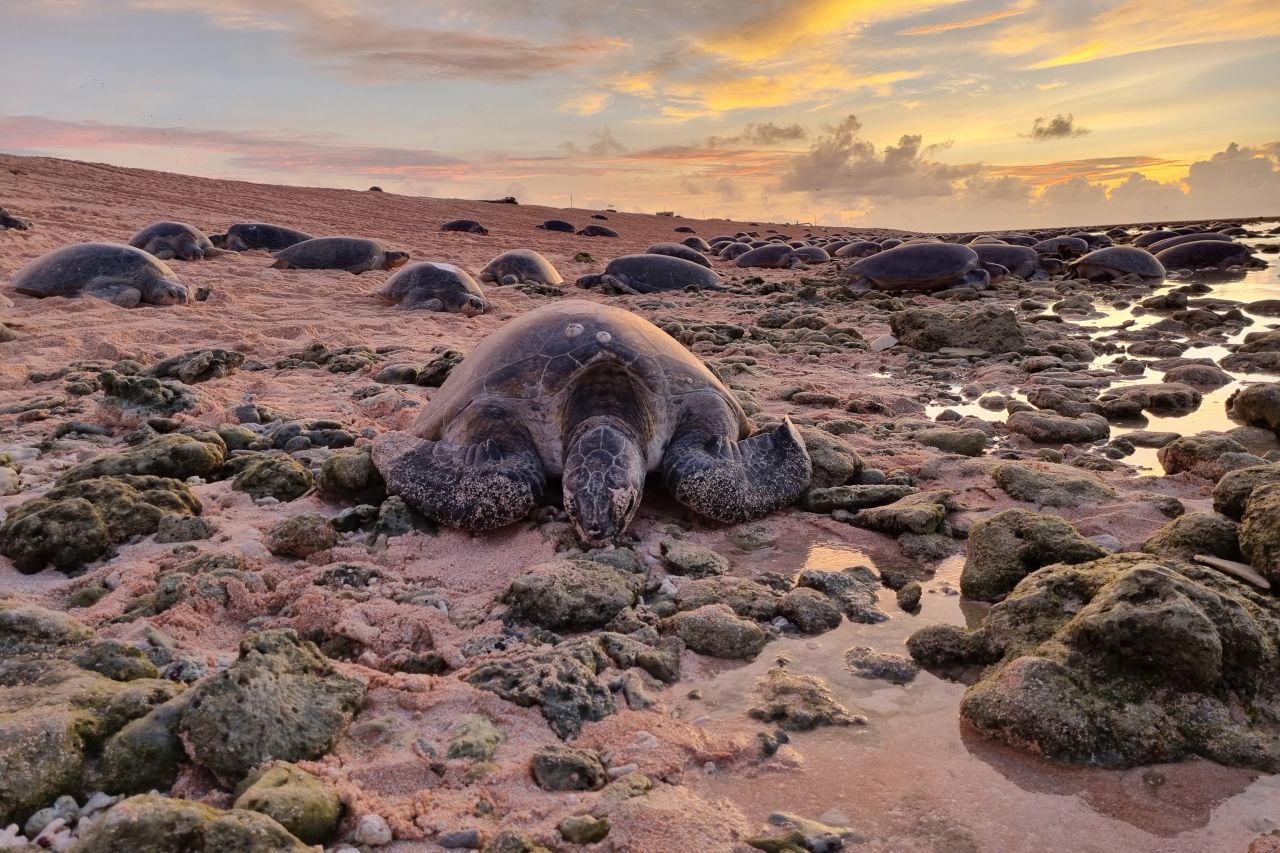
Guardians of the Green: Turtle Island’s Enduring Legacy as a Sea Turtle Sanctuary
In the vast, shimmering expanse of the Sulu Sea, a cluster of islands emerges like emerald jewels, bearing a name that resonates with ancient marine life: Turtle Island. More than just picturesque landmasses, these islands, particularly Selingan, Bakungan Kecil, and Gulisan within the Malaysian state of Sabah, represent one of the world’s most vital havens for sea turtles, particularly the Green (Chelonia mydas) and Hawksbill (Eretmochelys imbricata) species. Here, an age-old ritual of life, death, and renewal unfolds nightly, meticulously safeguarded by a century of unwavering conservation efforts.
Turtle Island, or Pulau Penyu as it is known locally, is not merely a nesting ground; it is a living laboratory, a beacon of hope for critically endangered species, and a testament to the power of dedicated conservation. Unlike many other nesting sites globally, the Turtle Islands Park in Malaysia boasts one of the longest and most successful sea turtle conservation programs, initiated formally in 1977 but with roots stretching back to the early 20th century. This long-standing commitment has transformed these islands into a unique sanctuary where human intervention, guided by scientific understanding, plays a crucial role in ensuring the survival of these magnificent reptiles.
Every night, under the cloak of darkness and guided by an instinct honed over millions of years, female sea turtles embark on an arduous journey from the depths of the ocean to the familiar shores of their birth. With powerful flippers, they haul their massive bodies across the sand, often weighing hundreds of kilograms, to find the perfect spot above the high-tide line. The sight is both primeval and profoundly moving – a silent, determined act of perpetuation. The process of digging a nest, laying an average of 100-150 leathery eggs, and then meticulously covering them before returning to the sea, can take several hours, leaving the female exhausted but having fulfilled her biological imperative.
However, the natural world is fraught with perils. Left undisturbed, a significant percentage of these nests would fall prey to predators such as monitor lizards, birds, and even opportunistic crabs. Tidal surges and beach erosion also pose substantial threats, washing away entire clutches before they have a chance to incubate. This is where the human guardians of Turtle Island step in.
"Our philosophy here is proactive conservation," explains a senior park ranger, his eyes scanning the moonlit beach for fresh tracks. "We don’t just watch; we actively manage. The moment a turtle finishes laying her eggs, our team is there." Immediately after a female turtle completes her nesting, park rangers carefully excavate the nest and relocate the eggs to a centralized hatchery. This controlled environment, protected by fencing and constant surveillance, shields the precious cargo from predators and environmental hazards. Each nest is meticulously documented, noting the species, number of eggs, and the date of laying, providing invaluable data for research.

The hatchery system is the cornerstone of Turtle Island’s success. By relocating eggs, the survival rate from predation dramatically increases, leading to a higher number of hatchlings. After approximately 50-60 days, depending on the species and sand temperature, the tiny hatchlings emerge, instinctively digging their way to the surface. Their journey is then assisted, as rangers collect them and release them directly into the sea at dusk, minimizing their exposure to daylight predators. This controlled release gives the hatchlings the best possible start to their perilous lives, knowing that only a fraction – often cited as 1 in 1,000 – will survive to adulthood.
Beyond egg relocation, the conservation efforts extend to comprehensive research and monitoring. Every nesting female is tagged with a unique identification number, allowing researchers to track her nesting patterns, frequency, and migration routes. This long-term data collection provides critical insights into the health of the sea turtle populations, their reproductive cycles, and the efficacy of conservation strategies. For instance, data collected over decades has revealed that many female turtles return to nest on the same island, sometimes even the same beach, every two to four years, underscoring the importance of protecting these specific locations.
However, the sanctuary of Turtle Island is not immune to the pervasive threats facing sea turtles globally. Climate change looms large, presenting multifaceted challenges. Rising sea levels threaten to inundate nesting beaches, reducing the available space for future generations. More alarmingly, the increasing global temperatures directly impact the sex ratio of hatchlings. Sea turtles exhibit temperature-dependent sex determination (TSD), meaning the temperature of the sand during incubation dictates whether a hatchling will be male or female. Warmer sands produce more females, while cooler sands yield more males. A sustained increase in sand temperatures could lead to a highly skewed female-dominated population, eventually jeopardizing the reproductive viability of the entire species.
Plastic pollution is another relentless adversary. The oceans are increasingly choked with plastic debris, from microplastics ingested by hatchlings to large plastic bags mistaken for jellyfish (a primary food source for Green turtles), leading to blockages and starvation. Abandoned fishing gear, or "ghost nets," continue to entangle and drown countless turtles. While the waters around Turtle Island are diligently patrolled, the sheer scale of ocean pollution means that turtles venturing beyond the park’s boundaries remain highly vulnerable.
Historically, poaching was a major threat, with turtle eggs and meat being sought after for consumption and traditional medicine. Thanks to stringent laws and vigilant enforcement by park rangers, poaching has been largely eradicated within the park’s confines. However, the vigilance must be constant, as demand for these products persists in some regions.
Tourism plays a carefully managed role in Turtle Island’s conservation model. A limited number of visitors are allowed onto Selingan Island each night, primarily to witness the nesting process and the release of hatchlings. This controlled ecotourism serves a dual purpose: it generates essential revenue to fund the park’s operations, staff salaries, and research, and it raises awareness among the public about the plight of sea turtles and the importance of conservation. Visitors leave with a profound understanding of these creatures and often become advocates for their protection. This delicate balance ensures that human presence supports, rather than disrupts, the natural processes.
The story of Turtle Island is a microcosm of the larger global struggle to protect biodiversity. Sea turtles are often considered indicator species; their health reflects the health of the ocean ecosystem. Their survival is not just about saving a single species; it’s about preserving the delicate balance of marine life and the intricate web of interactions that sustain our planet. The efforts on Turtle Island, rooted in a blend of traditional knowledge and modern science, provide a model for how humanity can co-exist with and actively support the natural world.
As the sun rises over Turtle Island, casting a golden glow on the pristine beaches, the evidence of the night’s ancient ritual is clear: fresh tracks leading to and from the sea, and the subtle depressions where new clutches of eggs lie buried, either in their natural nests or safely relocated in the hatchery. The journey of these magnificent marine reptiles is far from over, and the challenges they face are immense. Yet, in the dedicated hands of the guardians of Turtle Island, there remains a tangible hope that these ancient mariners will continue to grace our oceans for generations to come, their enduring legacy a testament to a shared future.



